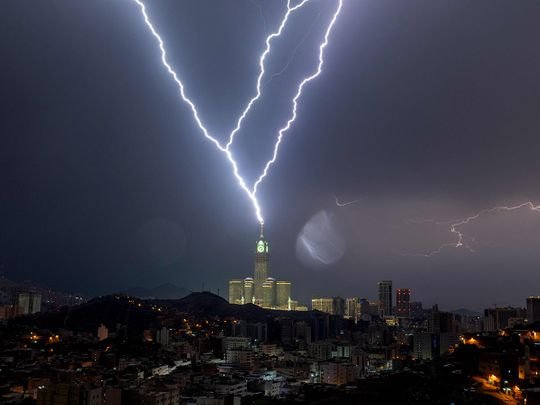Lightning strike , Environment change

Lightning Strike: Nature's Electrifying Spectacle
A lightning strike is one of the most awe-inspiring and dramatic phenomena that nature has to offer. It occurs when a buildup of electrical charge in the atmosphere is suddenly discharged in the form of a brilliant and powerful bolt of lightning. This electrifying spectacle has fascinated and frightened humans for centuries, inspiring myths, legends, and scientific inquiry.
The fundamental cause of lightning is the separation of positive and negative charges within a thundercloud. As water droplets and ice crystals collide and interact within the cloud, they become electrically charged. The negative charges accumulate near the bottom of the cloud, while the positive charges gather near the top. When the electrical potential difference between these charges becomes too great, it results in a lightning strike.
The actual lightning bolt is a visible discharge of electricity that can vary in length, from a few meters to over ten kilometers. It can strike from cloud to cloud, from cloud to ground, or even travel from the ground to the cloud. The intense heat generated by a lightning strike can reach temperatures hotter than the surface of the sun, causing the surrounding air to rapidly expand and create the characteristic thunderclap we hear as thunder.
Lightning strikes are not only visually stunning but also have significant impacts on the environment. They can start wildfires, damage buildings and infrastructure, and disrupt electrical systems. However, lightning also plays a crucial role in the natural world. It helps to replenish the Earth's nitrogen cycle by converting atmospheric nitrogen into forms that can be used by plants. Additionally, it contributes to the production of ozone, which is essential for protecting life on Earth from harmful ultraviolet radiation.
Humans have long been intrigued by lightning, and many cultures have developed myths and legends to explain its origins and significance. In Norse mythology, for example, lightning was associated with the god Thor, who was said to wield a mighty hammer capable of summoning thunder and lightning. In various cultures, lightning has been seen as a symbol of divine power, destruction, or even a messenger from the gods.
In conclusion, a lightning strike is a remarkable natural event that continues to captivate our imaginations and spark our scientific curiosity. While it can be both beautiful and destructive, lightning is a reminder of the immense power and complexity of the natural world. It serves as a testament to our ongoing efforts to understand and harness the forces of nature.